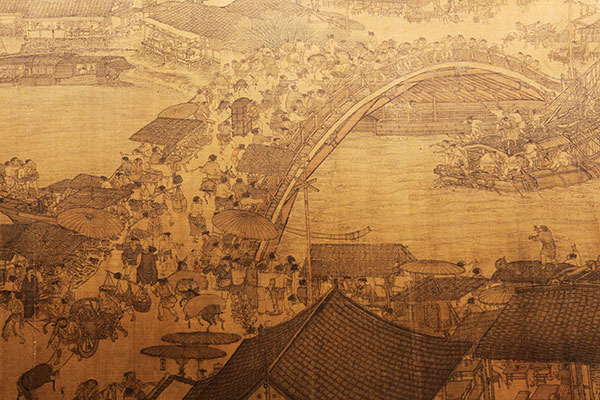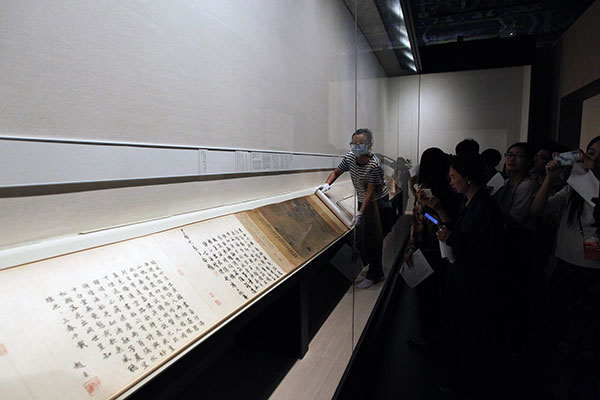
Riverside Scene at Qingming Festival (partial).[Photo by Jiang Dong/Asianewsphoto]
People in long lines waited to enter the Hall of Martial Valor in Beijing’s Palace Museum, also known as the Forbidden City, on Sept 8. But that was to be expected.
The best-known scroll painting in Chinese art history-titled Along the River During the Qingming Festival-was completely unrolled for the first time since 2005.

A staff member arranges the exhibition, Aug 27.[Photo by Jiang Dong/Asianewsphoto]
The work by Zhang Zeduan (1085-1145), measuring 24.8 centimeters wide and 5.29 meters long, depicts a flourishing landscape in Bianjing, the capital of the Northern Song Dynasty (960-1127). Bianjing is today’s Kaifeng in Henan province.
The scroll is only part of the special exhibition titled The Precious Collection of the Stone Moat, which includes 283 ancient paintings and calligraphy masterpieces once recorded in the Qing Dynasty emperors’ catalog. The display is a main event celebrating the museum’s 90th anniversary since opening to the public.
Only 200 people at time are allowed in the hall. Some visitors took out magnifying glasses to scrutinize the details, but they soon found it difficult to deal with impatient followers.
“It’s so crowded, but it is worthwhile,” said Shi Xuewen, a retired college professor who caught an early train from Tianjin just to view the treasures.
“I wish I could linger for a few more minutes in front of Along the River During the Qingming Festival,” Shi said. “But the staff asked people to keep moving to avoid a traffic jam in the hall. It’s too hasty to enjoy such a banquet of art.”
Still, he arrived before peak time and had about half an hour to take in the artworks.
For Li Ning, a Beijing civil servant, attending exhibitions in the Palace Museum is a regular part of his lifestyle. But he was excited when he joined the waiting line.
Other rare works on display
The Stone Moat, known in Chinese as Shiqu Baoji, is a royal inventory complied by 31 top-level scholars and art appraisers during the reign of Emperor Qianlong (1736-96).
